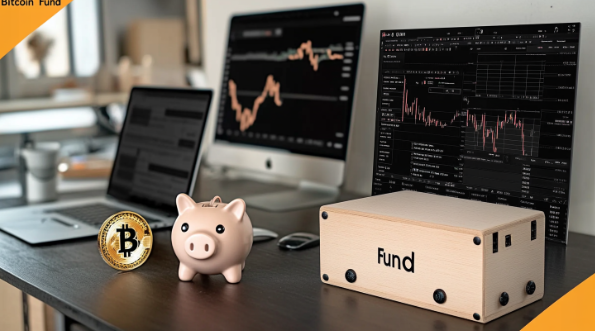Bitcoin has transformed from an experimental technology in 2009 to a $600+ billion asset class in 2023. Research shows first-time crypto investors typically allocate 1-3% of their portfolio, with those under 35 investing 15% more frequently than older demographics.
Market analysis reveals that 76% of new investors enter during price corrections rather than all-time highs, with average first purchases around $250. For newcomers considering cryptocurrency investment, learning how to buy btc through reputable exchanges represents the critical first step toward building a diversified digital portfolio.
Understanding Bitcoin as an investment
Bitcoin occupies a unique position in modern investment portfolios. Unlike stocks that represent ownership in companies or bonds that constitute debt obligations, Bitcoin functions as a decentralized digital currency operating independently of central authorities. This fundamental distinction shapes its behavior as an investment asset.
Many financial advisors now recommend considering Bitcoin as part of a diversified portfolio, with allocations typically ranging from 1% to 5% depending on individual risk tolerance. This positioning acknowledges Bitcoin’s potential for significant growth while respecting its historical volatility.
Bitcoin’s value proposition centers on several key attributes: its fixed supply cap of 21 million coins, global accessibility, 24/7 market operations, and increasing institutional adoption. Each of these aspects contributes to its investment profile, though none guarantees future performance.
“Bitcoin’s volatility isn’t a bug—it’s a feature of price discovery in a new asset class,” notes many market analysts. First-time investors should approach Bitcoin with this perspective, understanding that substantial price swings reflect the market’s ongoing valuation process of this relatively young asset.
First-timer strategy #1: Start small and build knowledge
Begin with modest amounts—perhaps $100 to $500—to gain practical experience without risking significant capital. This approach transforms potentially costly mistakes into affordable learning experiences while you develop understanding through educational resources.
“My first $200 in Bitcoin taught me more than months of reading. There’s something about watching real money fluctuate that focuses the mind wonderfully.”
First-timer strategy #2: Dollar-cost averaging
Dollar-cost averaging (DCA) involves investing fixed amounts at regular intervals regardless of price fluctuations. This methodical approach:
-
Removes the pressure of timing the market perfectly
-
Spreads risk across multiple price points
-
Establishes a disciplined investment habit
-
Reduces the impact of Bitcoin’s volatility
Many exchanges offer automated recurring purchase options, allowing you to implement this strategy with minimal effort. When prices drop, your fixed dollar amount automatically purchases more Bitcoin; when prices rise, you acquire less.
First-timer strategy #3: The HODL approach
“HODL” emphasizes long-term holding regardless of short-term price fluctuations. Historical data shows that despite significant volatility over shorter periods, Bitcoin has rewarded patient investors across most multi-year timeframes.
Preparing yourself mentally for Bitcoin’s volatility before investing is crucial. Many long-term holders report that experiencing their first major market correction strengthened their conviction after testing their investment thesis.
Security essentials for your Bitcoin journey
Unlike traditional financial accounts, Bitcoin operates on principles of irreversibility and personal responsibility. Select appropriate wallet solutions based on your investment amount:
-
Mobile wallets for smaller amounts and frequent use
-
Hardware wallets for larger holdings
-
Exchange wallets for simplicity but less security
Implement strong authentication practices, including unique passwords, two-factor authentication, and secure backups of recovery phrases. Remember that security breaches typically result in permanent loss.
Practical steps to make your first Bitcoin purchase
Select an exchange that serves your location and offers features aligned with your needs. Complete the verification process (KYC), which typically involves providing identification documents. Start with a small test transaction to confirm your understanding of the process, paying attention to associated fees.
“Make your first Bitcoin purchase a small one. There’s value in going through the entire process—from signup to withdrawal—with amounts that don’t cause anxiety.”
Building your confidence: Moving beyond basics
Develop a personal investment thesis articulating why you’re investing in Bitcoin, your timeframe, and what evidence would cause you to reconsider. Having this written down provides valuable perspective during market extremes.
Gradually increase security measures as your holdings grow, potentially transitioning from exchange storage to self-custody solutions. Consider thoroughly understanding Bitcoin before expanding into other digital assets.
Tracking and managing your Bitcoin investment
Establish regular monitoring without obsessive price checking. Maintain good record-keeping for tax compliance, as Bitcoin transactions may trigger taxable events in many jurisdictions. Consider portfolio rebalancing decisions as Bitcoin’s performance potentially changes its allocation within your broader investment strategy.
Learning from others
Avoid FOMO-based investing—buying during price surges often occurs near local peaks and leads to immediate paper losses. Establish proper security from the beginning, as recovery after problems may be impossible. Recognize that overtrading and market timing attempts frequently underperform simple buy-and-hold or dollar-cost averaging strategies.
Conclusion
Combine disciplined strategies with realistic expectations and appropriate security measures. Your cryptocurrency journey will span years rather than months, with evolving strategies as your knowledge and portfolio grow.
“Bitcoin rewards those who approach it with respect for its volatility and patience for its long-term potential.” By starting small, implementing structured investment strategies, prioritizing security, and committing to ongoing education, you position yourself to participate in Bitcoin’s continuing evolution regardless of short-term market movements.











